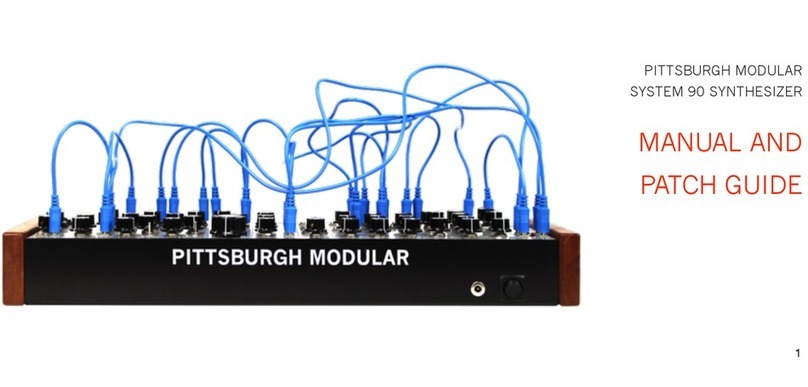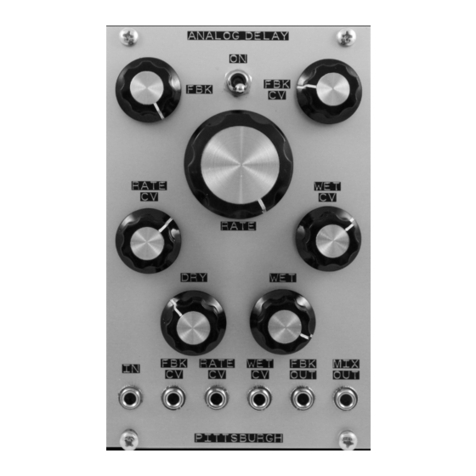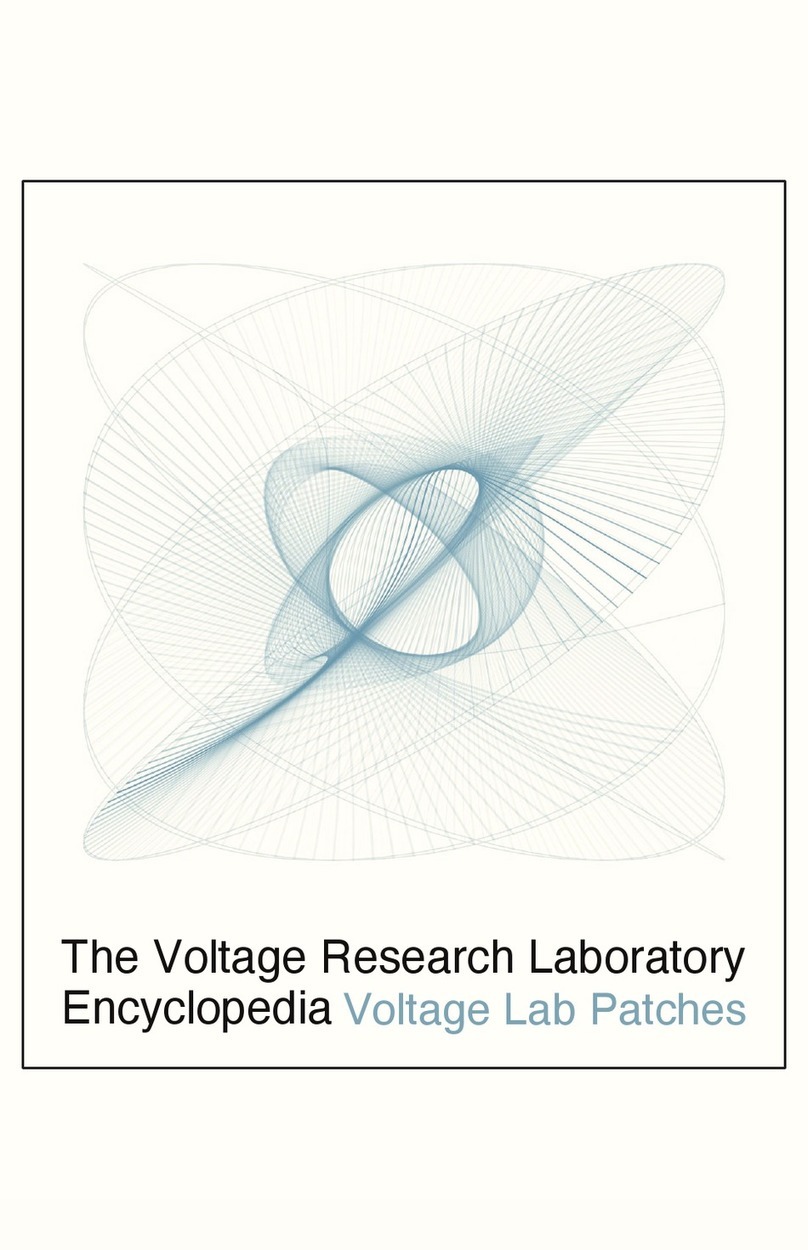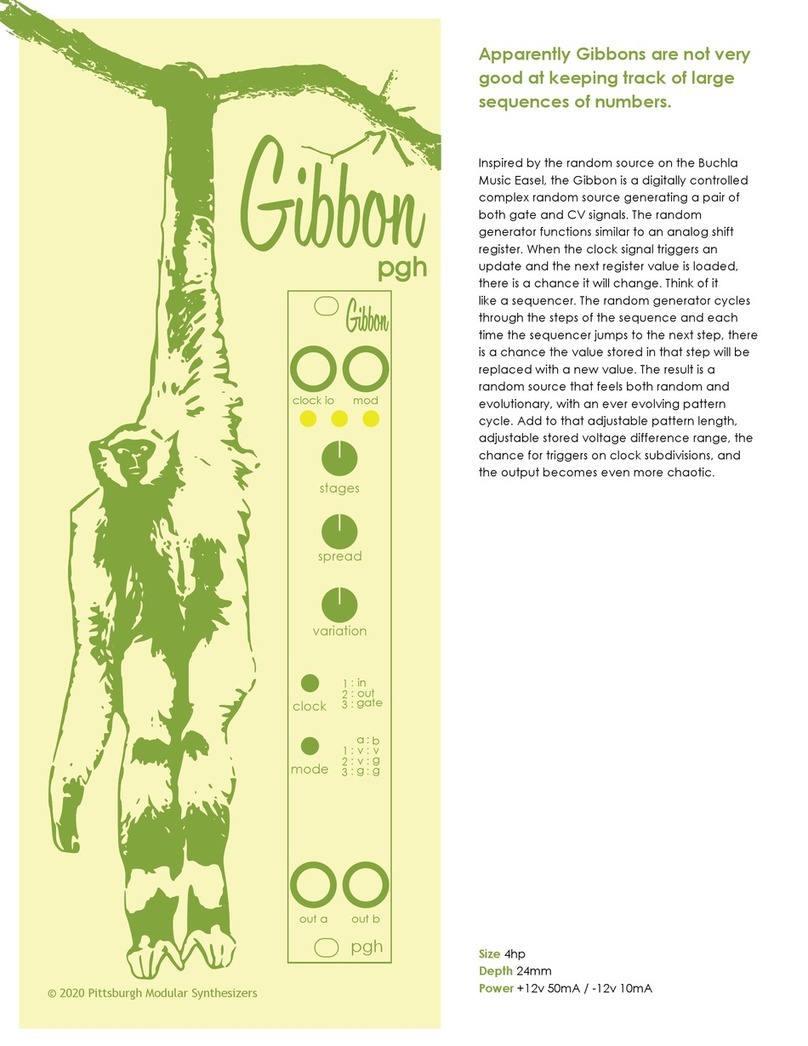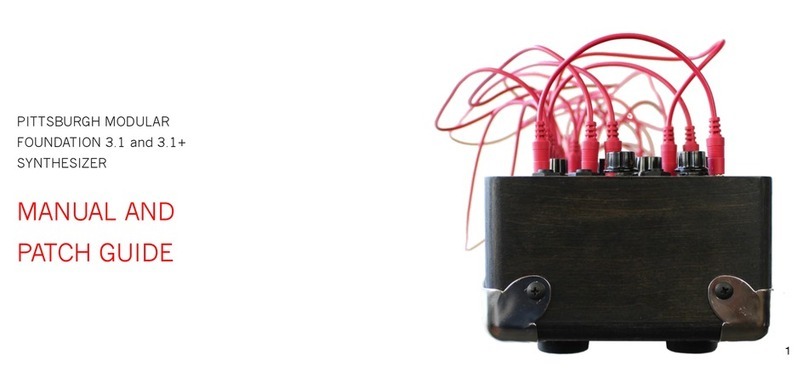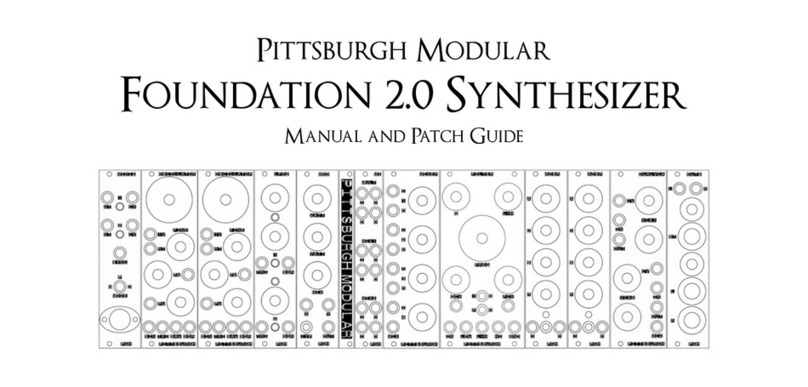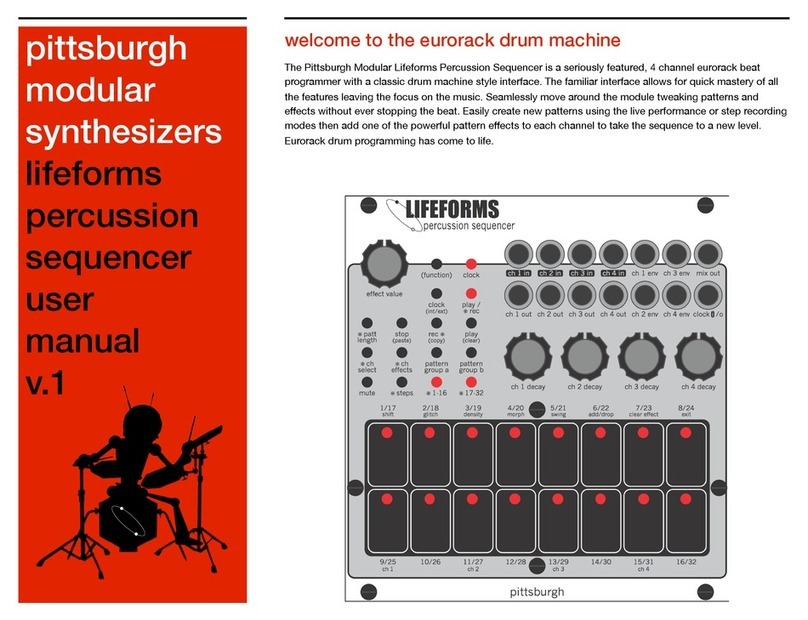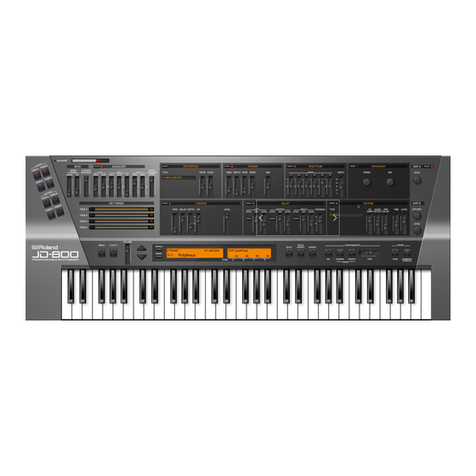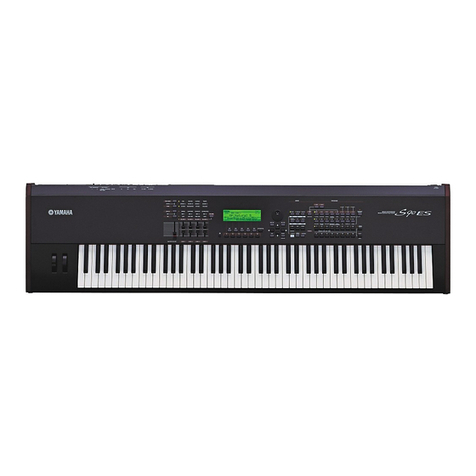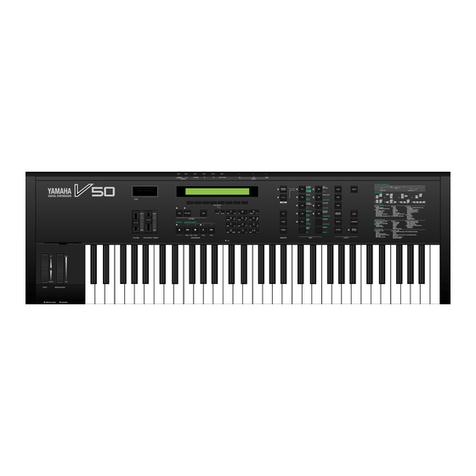mixer module
45. channel 1 input jack - channel 1 input jack. "
46. channel 1 input attenuator - channel 1 input attenuator."
47. channel 2 input jack - channel 2 input jack."
48. channel 2 input attenuator - channel 2 input attenuator."
49. channel 1 & 2 mix output jack - channel 1 & channel 2 output mix jack."
50. channel 3 input jack - channel 3 input jack."
51. channel 3 input attenuator - channel 3 input attenuator."
52. channel 4 input jack - channel 4 input jack."
53. channel 4 input attenuator - channel 4 input attenuator."
54. mix output jack - output mix jack."
filter module
55. filter cutofffrequency knob - filter frequency control knob."
56. frequency cv input jack - frequency cv input jack."
57. frequency cv input attenuverter - frequency cv input level control."
58. resonance knob - resonance control knob."
59. highpass output jack - highpass filter response output."
60. filter input jack - filter input jack."
61. bandpass output jack - bandpass filter response output."
62. lowpass output jack - lowpass filter response output.
tools module
63. oscillator 1 sub -1 output jack - -1 octave sub-oscillator output jack. "
64. oscillator 1 sub -2 output jack - -2 octave sub-oscillator output jack."
65. noise output jack - analog noise output jack."
66. sample & hold sample input jack - sample source input jack."
67. sample & hold hold input jack - hold gate input jack."
68. sample & hold output jack - sample & hold output jack."
adsr module
69. attack knob - envelope attack control knob."
70. decay knob - envelope decay control knob."
71. sustain knob - envelope sustain control knob."
72. release knob - envelope release control knob."
73. adsr led - indicates the status of the envelope output."
74. adsr input jack - envelope input gate jack."
75. adsr output jack - envelope output jack."
voltage controlled amplifier module
76. amplifier level cv input control - amplifier level cv input control."
77. amplifier input jack - amplifier input jack."
78. amplifier level cv input jack - amplifier level cv input jack."
79. amplifier output jack - amplifier output jack."
splitter module
80. splitter input jack - splitter input jack."
81. splitter output jack - splitter output jack."
82. splitter output jack - splitter output jack."
splitter module
83. splitter input jack - splitter input jack."
84. splitter output jack - splitter output jack."
85. splitter output jack - splitter output jack."
outputs module
86. outputs level control knob - headphone and main output level knob."
87. outputs input jack - outputs input jack."
88. headphones output jack - stereo headphones output jack."
89. main output jack - mono line level output jack.
